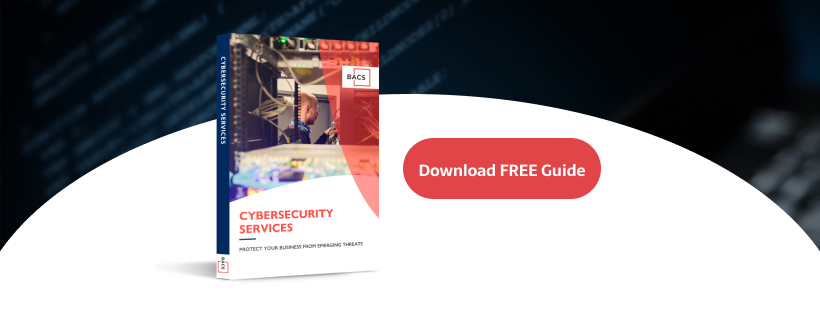The digital age has opened up an array of new and potentially vulnerable access points for cybercriminals to infiltrate your networks and its devices. Whether caused by a deliberate attack, human error, or a technical failure, a single data breach can prove catastrophic for businesses across industry sectors.
What Makes Financial Organizations Different?
While all types of businesses are potential attack targets, financial services organizations face unique and elevated risks in terms of information security and data loss. According to one study, the ongoing COVID-19 pandemic is compounding the problem and is being blamed for a 238 percent increase in cyberattacks against banks and other financial organizations.
As online banking and digital transactions continue to grow, safeguarding financial data and mission-critical systems becomes increasingly more challenging. Meanwhile, cybercriminals are uncovering new vulnerabilities and methods of exploitation, such as using artificial intelligence and the Internet of Things (IoT) to penetrate security defenses.
From reputational damage to ransomware and phishing attacks, financial institutions have a lot to worry about. Despite diligent planning and robust security practices, the financial services industry makes up 35 percent of all data breaches, earning it the unfortunate title of the most breached industry sector.
Maintaining consumer trust in the safe handling of their confidential data and assets is paramount for financial services companies. To ensure optimum protection and sustainability, security teams must implement robust defenses and be prepared to respond quickly to minimize damage, restore lost data, and ensure ongoing operation of systems and services.
While technology and markets continue to evolve, one constant remains: The more sensitive the data is, the more it’s potentially worth and the more determined criminals are to steal it. Following are five of the biggest threats facing the financial services industry.
Identity Theft and Data Manipulation
One particularly sneaky type of security threat for financial services organizations is an account takeover. In this type of attack, a criminal will gain access to a customer account and then change information so the real owner doesn’t have access and is unaware of the change. Criminals will often take it a step further by using those same log-in credentials to access other accounts the customer owns across multiple platforms. In some cases, they’ll also use the data they’ve collected to commit identity theft.

Phishing Attacks
Despite the many sophisticated hacking techniques criminals have at their disposal, many security breaches are the result of employee error, not intentional wrongdoing. For example, an employee might open a phishing email that installs malware on the bank’s network. (Incidentally, this technique was the most common type of cyberattack in 2016). The reasons for these types of mental errors or lapses in judgement vary widely, which makes eliminating them particularly challenging. In some instances, insufficient training is the culprit. In other cases, companies simply neglect to establish well-defined email usage protocols and safe operating procedures. Adding to the risk is the fact that more employees today are working remotely and are using devices not managed or controlled by IT.
Ransomware
Ransomware attacks have grown in popularity in recent years as a favored extortion tactic by cybercriminals and other bad actors. To gain access to a company’s mission-critical systems and confidential data, these attacks might begin with a phishing email or by exploiting vulnerability, such as an outdated operating system. The best protection includes strong access controls, advanced network monitoring and analysis tools, good employee training, and rigorous data backup and retention policies. Considering the potential monetary and reputational damage that can be inflicted, ransomware attacks are especially dangerous. Due to its high profitability potential and increasing effectiveness, this technique is expected to continue to be a heavy favorite for high-value targets.
Third-Party Vendors
The more network and device entry points an organization has, the more opportunities criminals have to penetrate its defenses. That’s precisely why working with third-party vendors can significantly increase the risk of a data breach. While banking and financial institutions typically have sufficient security resources and have invested heavily in data protection measures, many vendors themselves are usually smaller operations with fewer protections in place, less enforcement protocols, and less knowledge in cybersecurity technology. In addition, they often have their own IT security platforms and configurations that are outside your control, making it more difficult to secure your network and IT environment.
Emerging Technologies
As technology continues to evolve, criminals are finding new security vulnerabilities and methods to gain access to confidential financial systems and records. Meanwhile, the opportunities for fifth-generation (5G) mobile networks in financial services present an array of new risks, including supply chain vulnerabilities and network breaches. Likewise, many of today’s new web-based applications can pose data security threats by circumventing normal security protocols. While these apps are intended to make it easier for users to share files and collaborate, they can be vulnerable to attack because of their reliance on users for proper input and their diligence in following defined security protocols.

Staying Ahead of Cybersecurity Threats is Easier with BACS IT
Although companies operating in the financial sector understand the need to safeguard data, many struggle to implement effective protections without undermining other business priorities. Meanwhile, as systems and applications become more decentralized and dispersed, weaknesses and vulnerabilities become more difficult to recognize.
While there’s no single best strategy or surefire method of securing financial data and assets, a proactive approach can put your organization in the best position to mitigate risks while helping to ensure fast, effective disaster recovery. That’s why it’s critical to engage with an experienced cybersecurity expert who understands the unique security threats your business faces and can devise a plan that will effectively align with your priorities and support your long term goals. Reach out to us here at BACS IT today. We provide managed IT services for financial institutions and are here to help. Let us provide a free IT assessment to see where you stand!
1 VMware Report, Modern Bank Heists 3.0: Twenty-five CISOs from leading financial institutions reveal their thoughts on the 2020 attack landscape, (May 2020).


